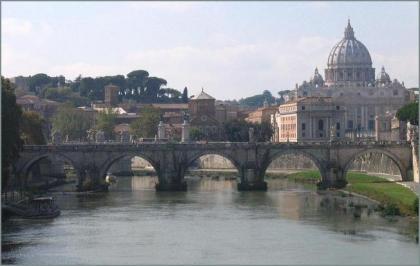Concordats
Originally they were pacts between two rulers, upheld by threats of excommunication. With the rise of nation states they became treaties between two governments, enforced by international law. Now they lay claim to be “international human rights treaties”, guaranteed by the charters of rights of the EU and the UN. Concordats can adapt to any political climate, from dictatorships to democracies, but their aim for the Church remains the same: to increase its own power. (See also What are concordats? )

(Latin: concordatum, “agreed upon”, from con “together” and cor “heart”)
♦ In the Middle Ages a concordat was an agreement between two absolute monarchs: between the pope as ruler of the Church and the Papal States, on the one hand, and the king of a country, on the other. Even as late as the mid-19th century a concordat was made between His Holiness the Supreme Pontiff Pius IX and Her Majesty the Catholic Queen Isabel II. It wasn't until 1957 that the Vatican came to an agreement with the United Nations to call itself the Holy See, rather than the State of the Vatican City. [p. 9] And even after that, it reverted to the personal mode when convenient. To allow the "treaty" to be ratified through signing it, the 1966 Haitain concordat is between the Plenipotentiaries of His Holiness Pope Paul VI and the Plenipotentiaries of His Excellency Doctor François Duvalier, President for Life of the Republic of Haiti. No mention here of the "Holy See".
♦ In early times, the king was bound to the agreement through fear of losing the favour of the Christian battle god, fear of rebellion by the bishops (who were also feudal lords with armed retainers), fear of excommunication by the pope, (which would absolve his subjects of their allegiance to him), and fear of burning in Hell. Even as late as the mid-20th century a public excommunication by Pope Pius XII was the signal for a revolt a few hours later which nearly cost President Juan Perón his life
♦ Later, concordats were recast as treaties between governments. This gives them the protection of international law. Treaties cannot be broken unilaterally, so that once a country enters into a concordat, it generally needs the assent of the Vatican to get out of it. (See The Vatican’s triple crown: Church, government and country.)
♦ But since concordats typically involve large subsidies to the Church, and also help it mould society, the Church is usually only willing to replace one agreement with an even stronger one. This results in a ratchet. (See What are concordats?)
♦ Concordats are depicted by the Church as “protecting” the rights of Catholics. However, they actually force Catholics (and non-Catholics, as well) to adhere more closely to Church doctrine, whether they wish to or not. (See Why Slovakia?)
♦ The latest claim for these protean agreements is that concordats guarantee “freedom of religion” and are therefore “international human rights treaties”. This looks like an attempt to get organisations like the European Union and United Nations, which have charters of rights, to exert external pressure on countries to observe their concordats.
♦ Yet because concordats give a privileged position to one particular church and force the secular state into closer conformity with its doctrine, they are actually potent weapons against human rights.
♦ An important human right is to live without fear. However, in a country that is all trussed up with concordats people can be turned into anxious “rice Christians”, afraid for their jobs and anxious about their most vulnerable relatives. (See An inside look at faith-based social services in Germany.)
♦ Wherever they are found and however they are justified, concordats are really about power and control.







